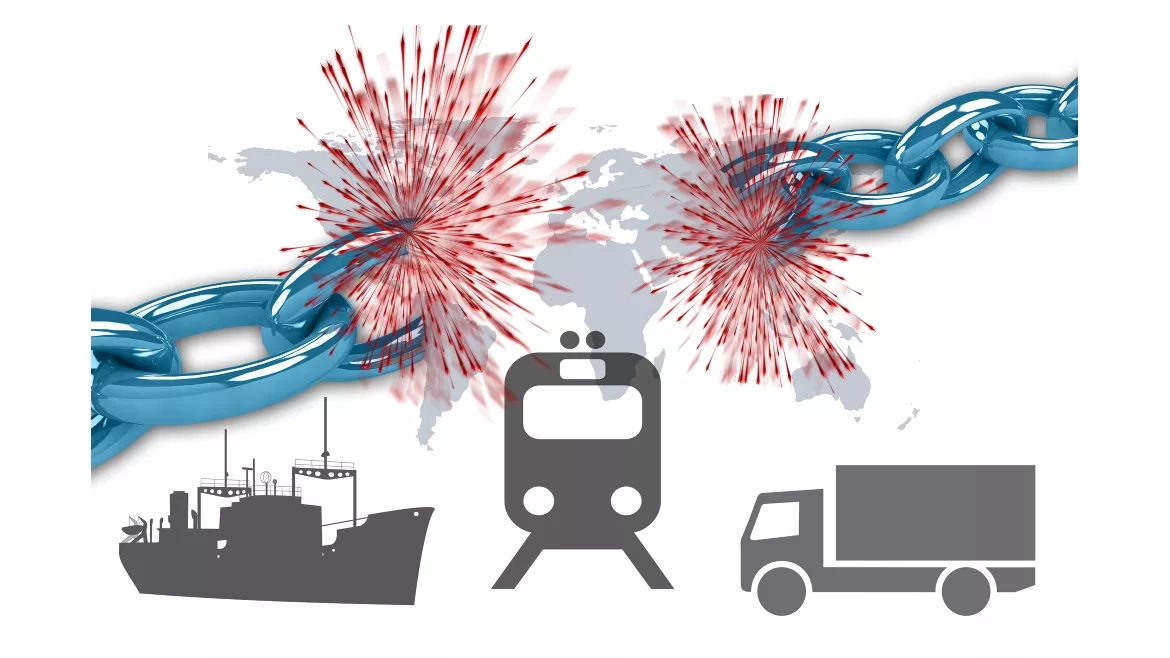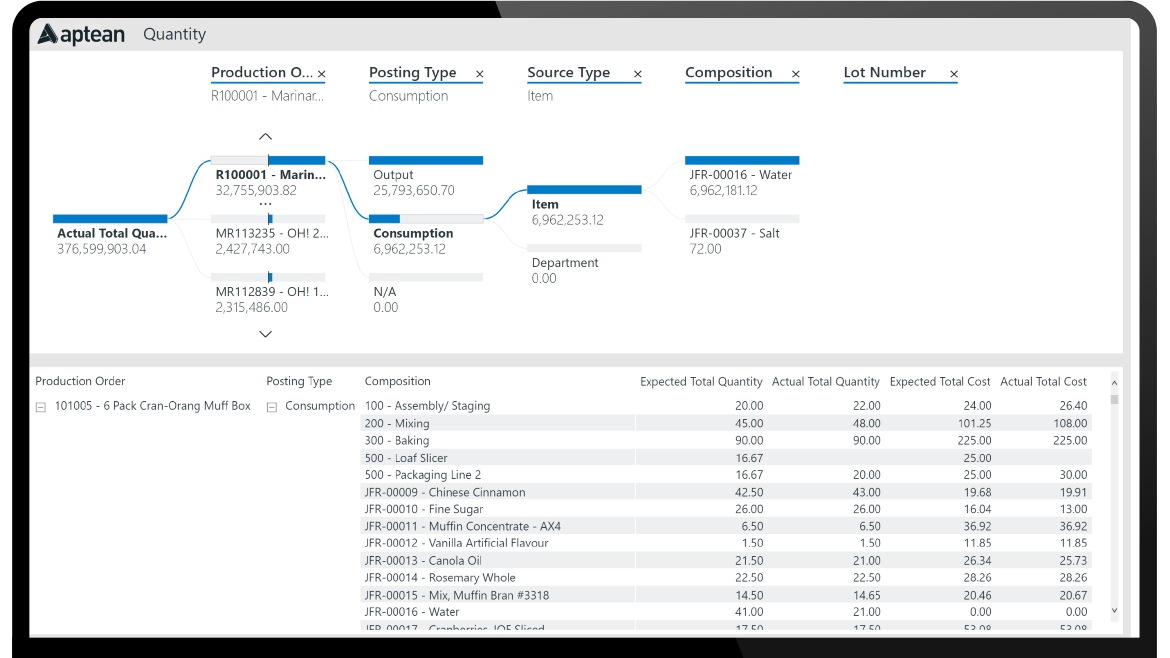Q&A
Tools to Manage Overtaxed Supply Chains Can Be the Basis for Digital Transformation

In the last couple of years supply chains have been broken by COVID-19, labor shortages and several unexpected issues, causing food and beverage companies to look for solutions that can help them withstand these problems. Image courtesy of Gerd Altmann from Pixabay
Thanks to the recent COVID-19 pandemic, supply chains have been taxed to the limit due to shortages of labor at food processors and farms. Logistics companies have also faced labor issues, not only directly attributable to coronavirus, but also strikes, lack of an ample supply of drivers, rising fuel costs and problems getting internationally shipped items off ships and onto the mainland.
For food processors who have graduated from spreadsheets, ERP systems have been typically the go-to in getting a digital transformation project off the ground when it’s time to expand a food manufacturer’s knowledge base to become more competitive. For example, an ERP’s production planning and material planning applications provide the tools to balance supply and demand, supporting the requirements of an agile supply chain.
Food and beverage ERP systems can accommodate inventory tracking via license plates and serial shipping container codes (SSCCs) to facilitate complete supply chain visibility, says Jack Payne, Aptean director of solutions consulting, food and beverage. Meanwhile, production scheduling functionality helps processors to sequence production, minimizing changeovers and downtime, maximizing efficiency and utilization and unlocking additional capacity when order volume increases.
For newer, smaller food processors, buying into a full-fledged on-premises ERP system can be expensive, as they are expected to foot the bill not only for the software licenses but the hosting hardware as well, which could include servers, client workstations, networking equipment and more. For these manufacturers, opting for a SaaS (software as a service) model—aka “cloud-based” systems—lets them get started with the functionality they need, and they can increment new functions as they require more competencies. Client devices connect via the web/internet through laptops, tablets and phones, freeing them from being stationed at one location. Of course, fixed “wired” workstations can still be used—they also connect to the cloud.
I spoke with Aptean’s Jack Payne to get a handle on today’s ERP systems and how they can help processors master current supply chain problems and get started on a digital transformation of their facility.  Jack Payne, Aptean director of solutions consulting, food and beverage
Jack Payne, Aptean director of solutions consulting, food and beverage
FE: What functionality do you often see missing from within food processors’ tools (typically ERP and/or MES, inventory, etc.) that could help them better manage their supply chains, are adaptable to their existing systems and will help avoid risk?
Jack Payne: Proactive demand planning is crucial for effective management of food and beverage processors’ supply chains, and disruptions tend to have a greater negative impact on those businesses without easy access to planning tools. After all, if you can’t plan for customer demand and consumer trends for specific goods, you will always operate in a reactive mode—scrambling to expedite supply and production to meet demand.
Predictive analytics are key to understanding consumer trends and getting ahead of shifts in market demand. Food and beverage processors must understand how the many market factors at play will affect their potential demand and use that information to dial in their purchasing of ingredients and production of inventory accordingly.
Aptean Food & Beverage ERP integrates seamlessly with our business intelligence solution, which offers tracking of more than 500 KPIs out of the proverbial box—300 of which are specific to the food and beverage industry. Aptean Business Intelligence uses machine learning to predict outcomes and users can experiment by changing different variables and running simulations to observe likely outcomes.
FE: How and in what order should these missing or low-powered tools be adapted or replaced in a processor’s toolset to better manage its ordering, inventory and supply chain; that is, to minimize supply chain risks?
Payne: Because demand planning plays such a critical role in the management of food and beverage processor’s supply chains, the proper foundation for an agile supply chain should be the highest priority. Demand forecasts what a business can expect to sell, so it’s best to start with an informed projection and then plan production and materials in reverse of the supply chain execution. A business can be very efficient in its production process but if it is making the wrong product at the wrong time or in the incorrect quantity, the overall business is not efficient.
Past sales data such as average sales per week for the last “x” weeks can certainly be useful in forecasts. Relying solely on that information and not considering trends in changing demand or seasonality factors can lead to inaccurate forecasting. For that reason, predictive analytics are vital—you need tools that will help account for seasonality, as well as trends in shoppers’ buying habits, to get the most accurate expectation of future sales.
When it comes down to it, ERPs are transactional applications—they help a processor keep track of materials moving from supplier to internal production facilities, through processing to become finished goods that can then be delivered to end customers. That’s why we think of them as the ideal foundation for a food and beverage business’s digital transformation.
 This production order shows all the ingredients going into a six-pack of cranberry-orange muffins, including expected and actual cost of ingredients and labor. Image courtesy of Aptean.
This production order shows all the ingredients going into a six-pack of cranberry-orange muffins, including expected and actual cost of ingredients and labor. Image courtesy of Aptean. FE: How should a processor budget for these tools? Which tools should be given a priority in adding to a manufacturer’s toolset, if they’re not already there? How can a processor keep its tool costs reasonable and its investments sound and secure in the future?
Payne: When budgeting for the implementation of new technology, an organization should consider both the potential for increased profits and the cost savings facilitated by the implementation of an industry-specific ERP solution. For example, demand planning tools can help processors ensure that they plan for sufficient inventory without investing in excess inventory that may expire before it can be used. Planning tools also help to meet order requirements, capitalize on revenue-generating opportunities and limit the need for overtime production, all benefits that impact the bottom line. Supply chain visibility features also help businesses avoid fines for late or short deliveries, adding to the cost savings that can be realized through an industry-specific ERP.
A big part of ensuring your software investments are sound is vetting providers for their industry-specific knowledge and expertise. If they don’t know your space and develop solutions tailored to it, you may have to implement expensive modifications to get the functionality you need.
FE: How should a processor look at ROI when investing in new supply chain tools? What is a reasonable expectation in ROI?
Payne: Maximizing ROI on your implementation of an ERP solution and any other supplementary software application comes down to leveraging the system effectively to improve supply chain visibility, overcome disruptions and align supply with demand precisely.
A successful deployment of an industry-specific ERP system can increase a food and beverage processor’s efficiency while also reducing downtime and minimizing costs via better production planning. The right ERP software can also help cut back on customer deductions, which can be a significant source of revenue leakage.
When deployed in a streamlined fashion with proper training for users and support from the provider, an ERP can generate full ROI in as little as 12 months. That’s not a guarantee by any means, but it does demonstrate the tremendous impact that a solution built for the food and beverage industry can have.
Looking for a reprint of this article?
From high-res PDFs to custom plaques, order your copy today!








